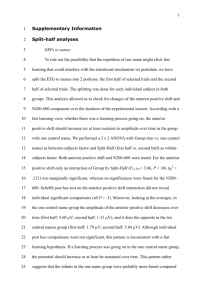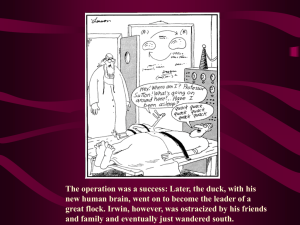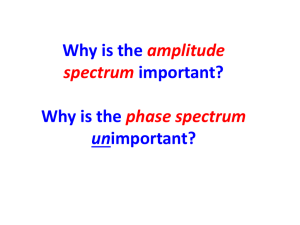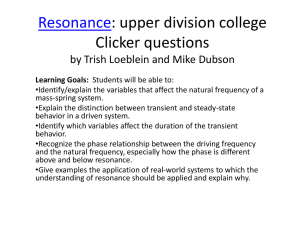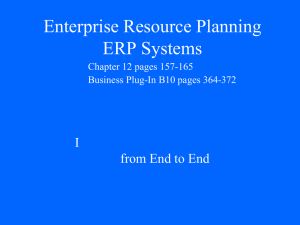Design and Interpretation of ERP Experiments
advertisement
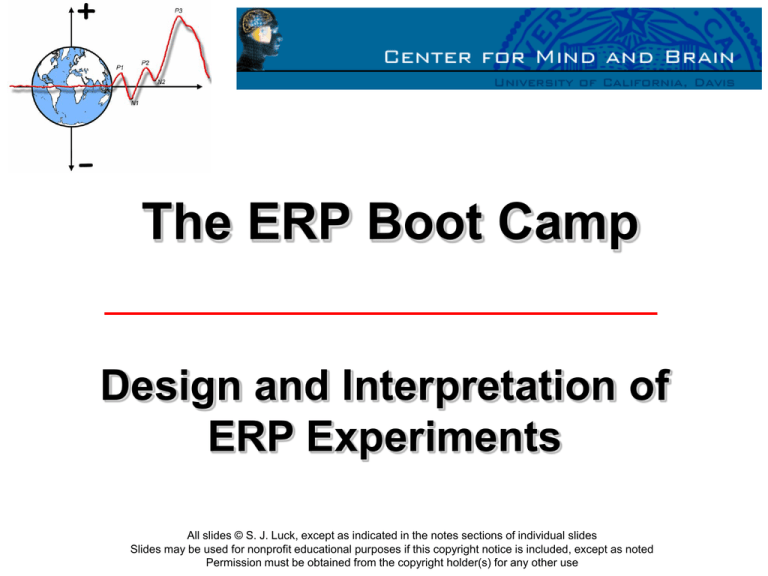
The ERP Boot Camp Design and Interpretation of ERP Experiments All slides © S. J. Luck, except as indicated in the notes sections of individual slides Slides may be used for nonprofit educational purposes if this copyright notice is included, except as noted Permission must be obtained from the copyright holder(s) for any other use Typical Design Problems • Failure to isolate a specific ERP component - Measurement of one component is distorted by a different component - You think you’re measuring Component X, but you’re really measuring Component Y - Your latency difference is really caused by an amplitude difference (or vice versa) - Amplitude differences are due to differences in latency jitter, not differences in single-trial amplitudes - Offset of ERP from trial N-1 distorts baseline of trial N Confounds and Side Effects • Confound: You explicitly manipulate two things together - Target is “X” / p = .1; Standard is “Y” / p = .9 - “That can’t possibly be producing my effect…” • Confounds that “don’t matter” in behavioral experiments often matter in ERP experiments - Form and timing of the stimuli • Side effect: You manipulate one thing, but that one thing indirectly influences other things - Condition A: SOA = 500 ms; Condition B: SOA = 1000 ms Subjects are bored in Condition B Overlap distorts waveforms in Condition A Potentially infinite number of side effects Confounds and Side Effects • Side effects are sometimes impossible to avoid - Even true confounds may be hard to avoid - Example: ERPs to content vs. function words • • If you can’t eliminate them, show that they don’t actually produce the observed effect Example: Embedded words - • BITE vs. PECK Looking for early differences Might be sensory differences between word classes Solution: Test speakers of two different languages This is a lot of work - But if the experiment is worth doing, it should be worth the effort to do it right (pride!!!) Example Experiment • Goal - Examine P3 for easy and difficult discriminations • Design - • Oddball experiment with foveal stimuli at 1/sec X on 20% of trials; O on 80% of trials Press a button for X; no response for O No target repetitions Stimuli are bright or dim (different blocks) Analysis - P3 amplitude measured as baseline-to-peak voltage Problems and Solutions • Problem: Target and standards are physically different - Different stimuli elicit different ERPs - Sensory responses can persist for hundreds of ms - Differential adaptation • • The Hillyard Principle- Always compare ERPs elicited by the same physical stimuli, varying only the psychological conditions Solution: Use 5 characters; each is target in one of 5 trial blocks Violations of Hillyard Principle Luck & Hillyard (1994) Violations of Hillyard Principle Luck & Hillyard (1994) Problems and Solutions • • Problem: Subjects make response to target, not to standards - Motor activity contaminates P3 - Solution: Separate responses for target & standards Problem: Target always preceded by nontarget - Nontarget baseline contaminated by overlap from previous P3 - Solution 1: Completely random sequence - Solution 2: During averaging, exclude nontargets preceded by targets Overlap Jittering the SOA is equivalent to filtering out high frequencies from overlap Overlap is a problem primarily when it differs across conditions Peak Amplitude and Noise • Problem: Peak amplitude biased by number of trials - Solution: Mean amplitude or select a random subset of nontargets Clean Waveform Waveform + Noise Problems and Solutions • Problem: Brightness manipulation has side effect of changing sensory components - Solution: Control experiment to show that brightness per se does not impact P3 amplitude • Problem: Subjects may be in a different state of arousal during bright and dim blocks - Solution: Mix brightness within blocks • Problem: RTs will be different for bright & dim targets - Solution 1: Select sets of trials with equivalent RT distributions for averages - Solution 2: Estimate and remove motor potentials More Rules Rule #6- Whenever possible, avoid physical stimulus confounds by using the same physical stimuli across different psychological conditions Rule #7- When physical stimulus confounds cannot be avoided, conduct control experiments to assess their plausibility Rule #8- Be cautious when comparing averaged ERPs that are based on different numbers of trials Rule #9- Be cautious when the presence or timing of motor responses differs between conditions Rule #10- Whenever possible, experimental conditions should be varied within rather than between trial blocks Some General Advice • ERP experiments are hard to design perfectly • You will constantly be frustrated by the need to balance the • number of conditions with the number of trials per condition Keep each experiment as simple as possible, and realize that you will probably need multiple experiments - The additional experiments will provide your replications! • • • • In the end, this will save you time Each experiment will teach you something that will allow you to do a better job with the next experiment Don’t try to do the last experiment first “Context of Discovery” vs. “Context of Justification”

